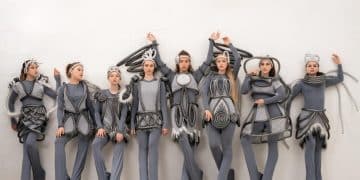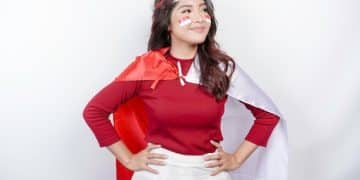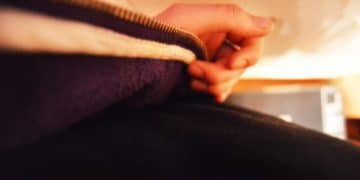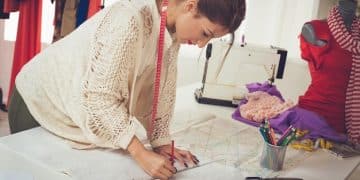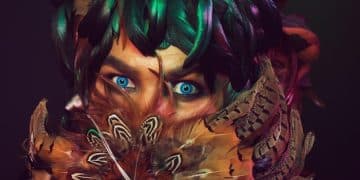Cosplay Pattern Drafting: A Beginner’s Guide to Custom Costumes
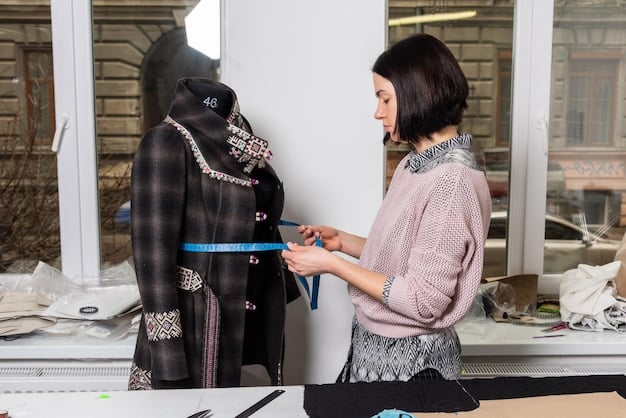
Cosplay pattern drafting empowers beginners to create custom-fit costumes by learning fundamental techniques like taking accurate body measurements, understanding basic pattern shapes, and adapting existing patterns for personalized designs.
Embarking on the world of cosplay is an exciting journey, but achieving the perfect fit for your character’s costume can be a challenge. That’s where cosplay pattern drafting comes in – a fundamental skill that empowers beginners to create custom-fit costumes tailored to their unique body shapes and design preferences. Don’t let off-the-rack sizes limit your creativity, mastering pattern drafting opens the door to crafting truly personalized cosplays.
Cosplay pattern drafting for beginners
Cosplay pattern drafting might sound intimidating, but it’s accessible to everyone with a basic understanding of sewing. This guide will break down the fundamentals, providing you with the knowledge and confidence to start creating your own custom cosplay patterns.
By learning how to draft your own patterns, you’ll unlock a new level of creative control and ensure that your cosplay fits you perfectly. Whether you’re aiming to replicate an iconic character or design something entirely original, pattern drafting is your key to success.
Why learn cosplay pattern drafting?
There are several compelling reasons to learn cosplay pattern drafting, even if you’re a beginner. Let’s explore the advantages:
- Perfect Fit: Store-bought patterns often require extensive alterations to fit correctly. Drafting your own pattern ensures that the costume conforms to your specific body measurements, resulting in a comfortable and flattering fit.
- Creative Freedom: Pattern drafting allows you to design and create costumes that are not available commercially. You can unleash your imagination and bring unique character concepts to life.
- Cost Savings: While there’s an initial investment in drafting tools, you’ll save money in the long run by not needing to purchase or modify existing patterns, especially for complex or unconventional designs.
- Skill Development: Mastering pattern drafting enhances your sewing skills and provides a deeper understanding of garment construction and design principles.
Ultimately, learning cosplay pattern drafting is about taking control of your creative vision and achieving professional-looking results.
Essential tools and materials
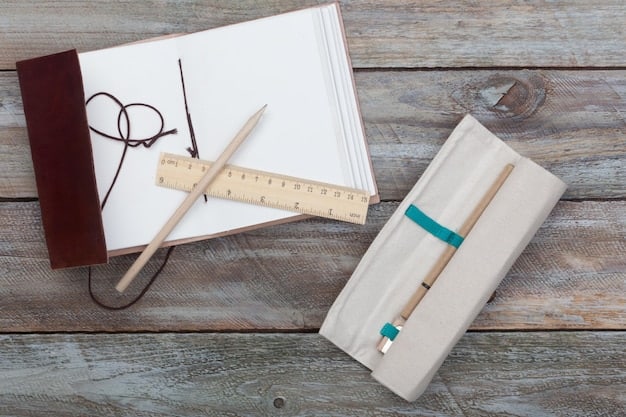
Before you dive into pattern drafting, it’s essential to gather the right tools and materials. Having these items on hand will make the process smoother and more enjoyable.
Investing in quality tools will not only enhance your experience but also lead to more accurate and professional-looking results. Let’s take a look at each one:
- Measuring Tape: A flexible measuring tape is crucial for taking accurate body measurements. Look for one that is clearly marked in both inches and centimeters.
- Pattern Paper: Use lightweight paper specifically designed for pattern drafting. It’s thin enough to see through for tracing but durable enough to withstand repeated use.
- Pencils and Erasers: A set of pencils in varying lead hardness allows for precise drawing and easy erasing. A good eraser is essential for correcting mistakes.
- Ruler and Yardstick: These tools are necessary for drawing straight lines and marking accurate measurements. A clear ruler makes it easier to see your markings.
- French Curve and Hip Curve: These curved rulers are invaluable for shaping necklines, armholes, and other curved areas of your pattern.
- Scissors and Rotary Cutter: Sharp scissors are essential for cutting pattern paper and fabric. A rotary cutter and cutting mat can make cutting fabric faster and more accurate.
- Seam Ripper: Mistakes happen. A seam ripper allows you to easily remove stitches without damaging the fabric.
With these essential tools and materials, you will be well on your way to successfully drafting your own cosplay patterns.
Taking accurate body measurements
Accurate body measurements are the foundation of successful pattern drafting. Taking precise measurements ensures that your custom-made cosplay will fit comfortably and conform to your body shape.
It’s helpful to have a friend assist you with measuring, as some measurements are difficult to take accurately on your own. Wear form-fitting clothing while measuring to ensure the most precise results.
Key measurements to take
Knowing which measurements to take and how to take them correctly is vital. Here’s a guide to the most important measurements for cosplay pattern drafting:
- Bust: Measure around the fullest part of your bust, keeping the tape measure level.
- Waist: Measure around your natural waistline, which is usually the narrowest part of your torso.
- Hips: Measure around the fullest part of your hips, keeping the tape measure level.
- Shoulder Width: Measure from the outside edge of one shoulder to the outside edge of the other shoulder, across your back.
- Back Waist Length: Measure from the prominent bone at the base of your neck down to your natural waistline.
- Sleeve Length: Measure from the shoulder point down to your wrist, with your arm slightly bent.
Record all measurements carefully and double-check them to ensure accuracy. These measurements will be used to create the basic blocks of your pattern.
Understanding basic pattern shapes (blocks)
Pattern blocks, also known as slopers or masters, are the fundamental building blocks of garment construction. They are simple, basic pattern shapes that represent the core elements of a garment, such as the bodice, skirt, sleeve, and pants/trousers.
Understanding how to create and manipulate these basic blocks is crucial for developing custom cosplay patterns. They serve as a blank canvas upon which you can add design details and customize the fit to your exact specifications, so it saves a lot of time by drafting the basics once, and then working from there.
Creating a basic bodice block
In order to draft a basic bodice block, one needs to follow a series of steps using the measurements previously taken. Here’s a brief overview of the key steps:
- Draw a rectangle: Using your bust and back waist length measurements, draw a rectangle on pattern paper. This will be the foundation of the bodice block.
- Mark the neckline: Measure and mark the neckline width and depth based on your measurements. Use a French curve to shape the neckline smoothly.
- Shape the shoulder slope: Mark the shoulder slope angle and draw the shoulder line.
- Draft the armhole: Use your armhole measurement to shape the armhole curve, ensuring it fits comfortably.
- Define the waistline: Mark the waistline and shape the side seams to create the desired bodice shape.
Creating a basic bodice block allows for a customized foundation that will be used from here on out on cosplay projects.
Adapting existing patterns for cosplay
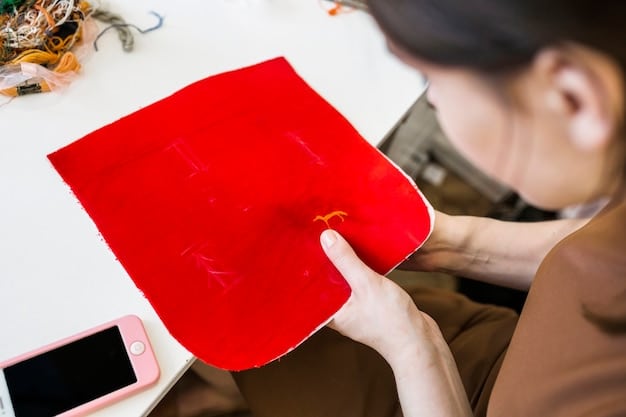
While creating patterns from scratch is ideal for custom-fit cosplays, adapting existing patterns can be a quicker and easier approach for certain designs. Learning how to modify commercial patterns opens up endless possibilities.
This method involves using a pre-made pattern as a starting point and altering it to fit your measurements or match the design elements of your character.
Techniques for altering patterns
Adapting patterns requires a combination of measuring, cutting, and taping. Here are some common techniques for altering existing patterns:
- Grading Between Sizes: If your measurements fall between sizes on a pattern, you can grade the pattern by blending between the lines of the adjacent sizes.
- Lengthening or Shortening: To adjust the length of a pattern piece, cut it at the designated lengthen/shorten line and add or subtract the desired amount of length.
- Adjusting Bust, Waist, and Hips: You can adjust the bust, waist, and hips by slashing and spreading or overlapping the pattern pieces.
- Adding or Removing Fullness: You can add fullness to a skirt or sleeve by slashing and spreading the pattern piece. Conversely, you can remove fullness by overlapping the pattern piece.
By mastering these techniques, you’ll be able to modify existing patterns with confidence and create cosplays that fit you perfectly and match your character’s design.
Advanced techniques for custom designs
Once you’ve mastered the basics of pattern drafting and adaptation, you can start exploring more advanced techniques to create truly unique and complex cosplay designs.
These techniques involve manipulating patterns in more sophisticated ways to achieve specific visual effects and create garments that stand out. Let’s explore some of these techniques:
- Draping: Draping involves manipulating fabric directly on a dress form or your body to create the desired shape and silhouette. This technique allows for a more organic and intuitive approach to pattern making.
- Flat Pattern Manipulation: This involves manipulating the flat pattern pieces to create complex shapes and designs. Techniques include adding darts, pleats, and gathers, as well as creating asymmetrical and geometric designs.
- Working with Knits and Stretch Fabrics: Drafting patterns for knit and stretch fabrics requires a different approach than drafting for woven fabrics. Knit fabrics require less ease and may require negative ease for a snug fit.
- Pattern Grading: Pattern grading allows you to scale a pattern up or down to create different sizes. This is a useful skill for creating multiple costumes in different sizes or for selling your patterns.
Experiment with these advanced techniques to push your creative boundaries and develop your own unique style as a cosplay pattern designer.
Tips for success: avoiding common mistakes
Cosplay pattern drafting can be a rewarding experience, but it’s not without its challenges. Here are some tips to help you avoid common mistakes and achieve success.
By keeping these tips in mind, you’ll be well on your way to creating stunning custom-fit cosplays that bring your favorite characters to life.
- Double-Check Your Measurements: Always double-check your measurements before drafting or altering a pattern. A small error in measurement can lead to a significant fit issue.
- Use Accurate Tools: Invest in quality measuring tools, rulers, and curves to ensure precise drafting.
- Practice Makes Perfect: Don’t be discouraged if your first attempts aren’t perfect. Pattern drafting is a skill that improves with practice.
- Test Your Patterns: Before cutting into your final fabric, create a muslin mock-up to test the fit of your pattern and make any necessary adjustments.
- Seek Guidance and Inspiration: Look to online communities, tutorials, and workshops for guidance and inspiration. There are many experienced cosplayers willing to share their knowledge and expertise.
| Key Point | Brief Description |
|---|---|
| 📏 Accurate Measurements | Taking precise body measurements is fundamental for a custom fit. |
| 📐 Basic Pattern Blocks | Understanding bodice, skirt, and sleeve blocks is crucial for creating custom designs. |
| ✂️ Adapting Patterns | Modifying existing patterns is a quicker way to achieve custom cosplay designs. |
| ✨ Advanced Techniques | Draping and flat pattern manipulation enables unique and complex designs. |
Cosplay Pattern Drafting FAQs
▼
The first step is to take accurate body measurements. Precise measurements are essential for creating well-fitting costumes. Use a flexible measuring tape and record all values carefully.
▼
You’ll need pattern paper, a measuring tape, a ruler, pencils, an eraser, French curve and hip curve rulers, scissors, and fabric for creating mock-ups. These aid in planning and executing the pattern.
▼
Start by measuring yourself and compare these measurements to the pattern sizes. Grade between sizes, lengthen or shorten pattern pieces, and adjust the bust, waist, and hips by slashing the pattern.
▼
Advanced techniques include draping fabric on a dress form, flat pattern manipulation involving darts and pleats, and specialized methods for knit and stretch fabrics. These make advanced cosplays easier to achieve.
▼
Creating a muslin mock-up is crucial for testing the fit of your pattern before cutting into your final fabric. It allows you to identify and correct fitting issues and make necessary adjustments.
Conclusion
Cosplay pattern drafting is a rewarding skill that empowers you to create unique, custom-fit costumes. By learning the fundamentals, investing in the right tools, and practicing consistently, anyone can master pattern drafting and bring their cosplay dreams to life.
